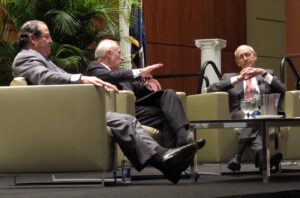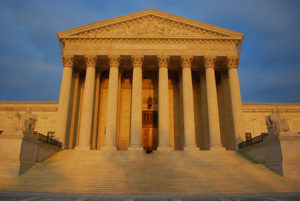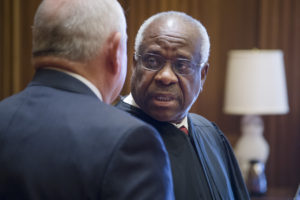Unmaking History
It's time for those of us who are old enough to remember when the U.S. Supreme Court was a major force for racial integration and justice to stop living in the past. We need to realize that, for the foreseeable future, any progress our increasingly diverse country makes toward fairness and equality will come in spite of the nation's highest court, not because of it.WASHINGTON — It’s time for those of us who are old enough to remember when the U.S. Supreme Court was a major force for racial integration and justice to stop living in the past. We need to realize that, for the foreseeable future, any progress our increasingly diverse country makes toward fairness and equality will come in spite of the nation’s highest court, not because of it.
No one should be surprised that the court, as it made clear Thursday, does not consider promoting racial diversity in the nation’s public schools a particularly worthy goal. No one should be surprised that Chief Justice John Roberts pretends not to even understand the concept: In his majority opinion striking down school integration plans in Seattle and Louisville, Ky., Roberts describes what the two cities were doing as “racial balancing,” even though local officials made clear that their intent was nothing more sinister than racial inclusion.
George W. Bush’s packing the court with conservatives is likely to prove one of the more enduring aspects of his unfortunate legacy. Bush appointees Roberts and Samuel Alito have joined Antonin Scalia and Clarence Thomas in a solid, four-justice bloc that can be reliably counted on, pretty much whatever the issue, to vote for turning back the clock.
That means all they need to do is win the vote of one of the court’s more moderate members and, voila, history can be unmade. In the schools decision Thursday, Anthony Kennedy sided with the conservative faction to invalidate the integration programs. Kennedy wrote his own opinion making clear that he does, too, understand what diversity is, and also why schools might want to foster it — if they can just figure out how.
Go ahead and promote racial diversity in the classroom if you think that’s important, the court basically said. But whatever you do, you can’t take race into account.
The irony is that the Seattle and Louisville plans were widely popular among both black and white parents. Both plans were designed, in essence, to ensure that segregated housing patterns — which are a fact of life in many U.S. cities — did not inevitably result in segregated schools.
The Louisville schools — like many other school systems in the South — had spent decades under a court-ordered desegregation plan. When a federal judge lifted the order several years ago, the local school board decided to keep most elements of the plan in place because it had worked so well. Racially integrated schools, officials decided, were good for the educational process and good for the community.
In Seattle, which had never been under a court-ordered desegregation plan, school officials had been using race as just one of several factors in trying to ensure diversity in the city’s public high schools.
I start from the premise that racial integration in the schools is a good thing. I think the educational process benefits from diversity, and all students are better served in an integrated classroom. I also believe that in a nation where minorities will someday form the majority, integration is an important civic lesson that our schools ought to be teaching. Given those beliefs, it seems to me that allowing local officials in Louisville and Seattle to continue with limited programs to ensure integration in the schools should be a no-brainer.
But our revanchist Supreme Court obviously doesn’t share my belief in diversity. Thomas, the court’s only black member, wrote a concurring opinion in which he had the gall to cite Brown v. Board of Education, the landmark 1954 decision that integrated the nation’s schools, as precedent for Thursday’s ruling — which will boldly advance the cause of resegregation.
Let’s not grasp at straws here. While Kennedy kept the court from definitively shutting the door on school integration, it’s clear what direction we’re headed. This court would have been perfectly happy for me to go to the “black” high school in my hometown of Orangeburg, S.C., instead of following a handful of pioneers who integrated the “white” high school. This court has the whole concept of affirmative action in its sights. Sorry about the whole slavery thing, and the whole Jim Crow thing, and the whole “separate but equal” thing, and, oh yes, the whole racism thing. That was then, and this is now.
If we as a society — black, white, brown, yellow, red — are going to work toward fairness, inclusion, equality and, yes, integration, we’re going to have to do it by working around those dour men in black robes on Capitol Hill. They have decided to stand in the schoolhouse door.
Eugene Robinson’s e-mail address is eugenerobinson(at symbol)washpost.com.
© 2007, Washington Post Writers Group
Your support matters…Independent journalism is under threat and overshadowed by heavily funded mainstream media.
You can help level the playing field. Become a member.
Your tax-deductible contribution keeps us digging beneath the headlines to give you thought-provoking, investigative reporting and analysis that unearths what's really happening- without compromise.
Give today to support our courageous, independent journalists.





You need to be a supporter to comment.
There are currently no responses to this article.
Be the first to respond.